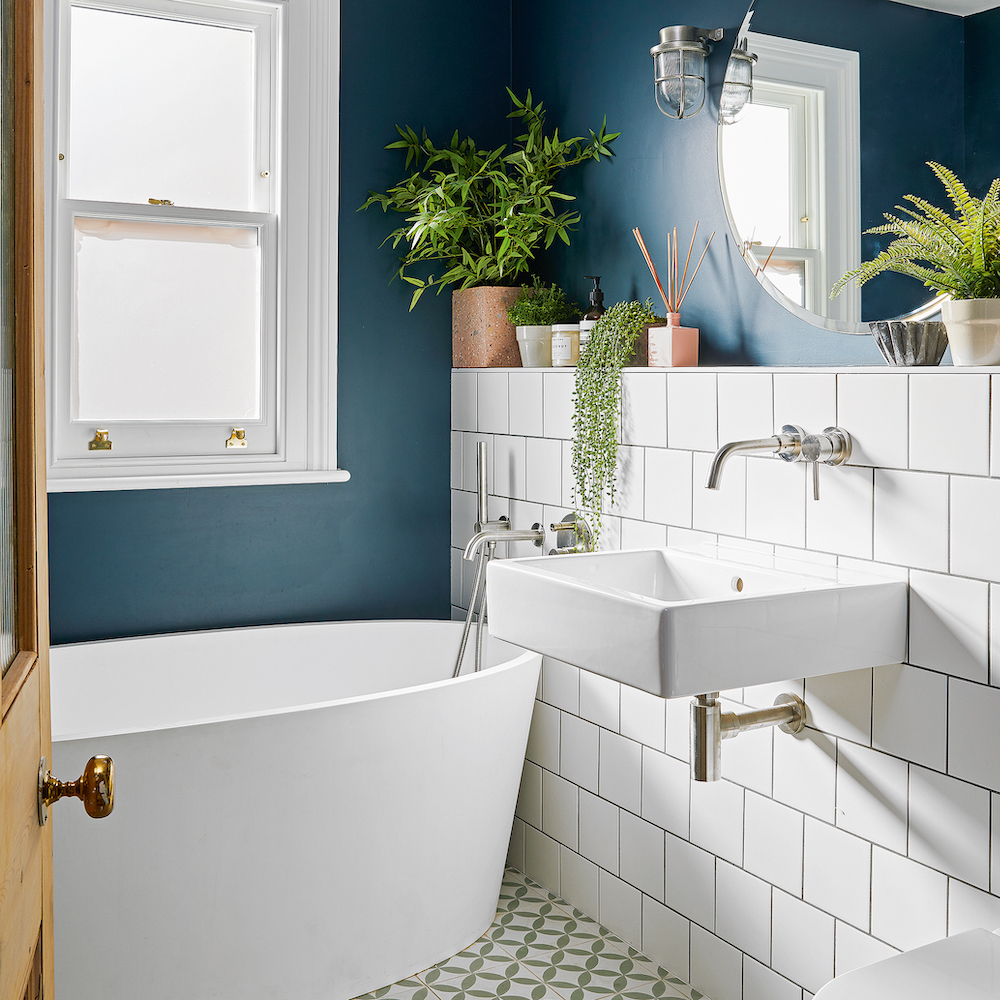
If your home is currently suffering from damp and you're wondering how to get rid of it, the answer is to catch the culprit and learn how to stop condensation on walls and ceilings.
Yes, whether you want to stop damp in a bedroom or stop dampness coming through walls, you’ll know just how damaging this excess moisture in your home can be. As well as causing visible damage to your property, prolonged dampness can also affect the health and well-being of the ones you love. Because of this, you don’t want to get to the stage where you have to get rid of mould.
Prevention is always better than the cure, which is why we’ve got all of the information you need on how to get rid of damp. This includes ways to prevent condensation build-up and the small everyday changes you can make that’ll make a big difference.
But if the problem runs deeper, whether it's rising or penetrating damp, we've consulted experts so you can take more targeted action, such as repairing faulty gutters, sealing up cracks, or investing in a dehumidifier.
The signs of damp
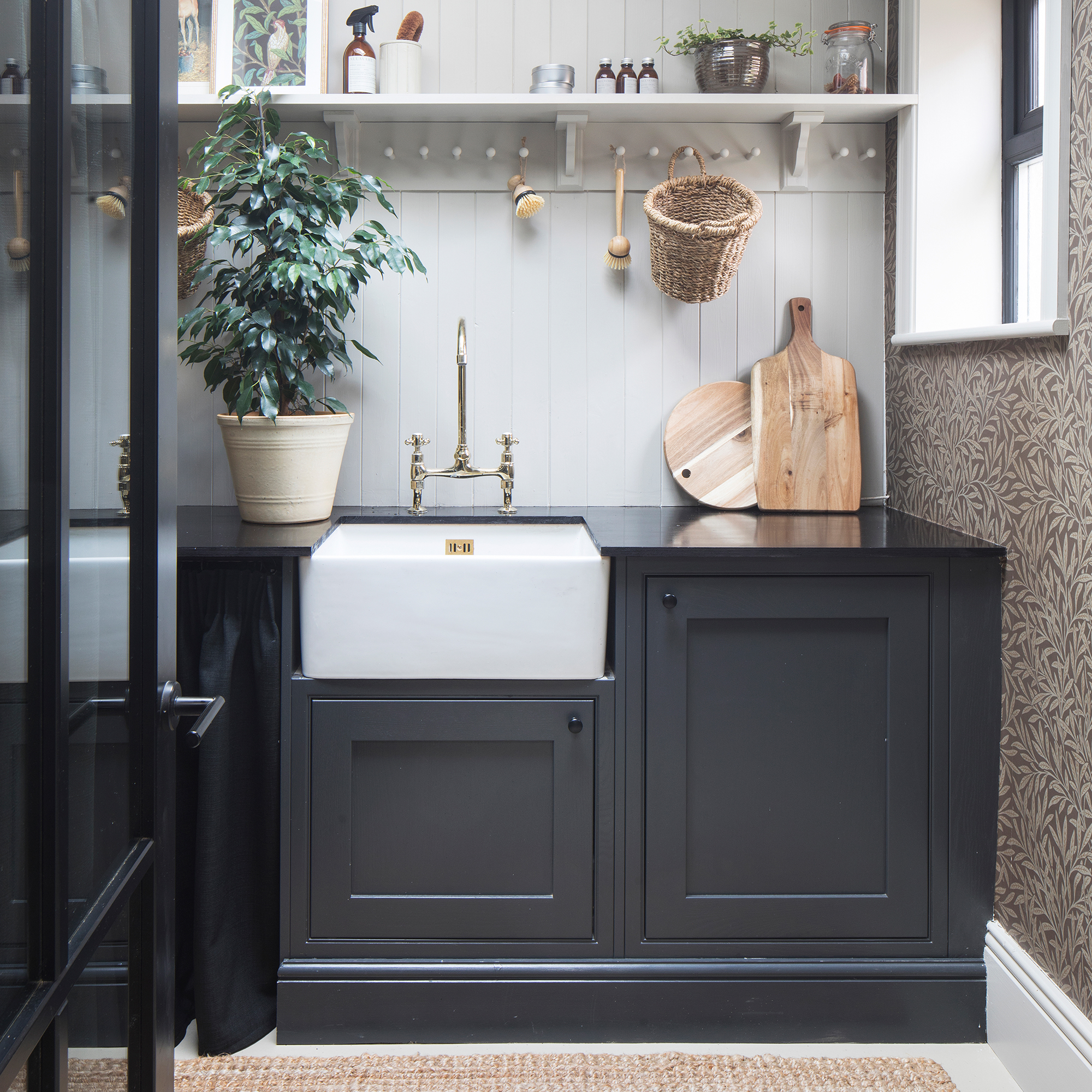
There’s a big difference between a spot of rain falling through an open window and a home that’s suffering from damp.
So the best way to get rid of damp effectively is to inspect your home every so often for the tell-tale signs of damp, such as:
- Musty smell: A damp room has a musty, distinctive scent. As soon as you open a door, you won't be able to mistake it. It may be that your clothes smell musty, too.
- Wall marks: Dark marks on the wall are all signs that you could have damp. Damp can also manifest as discoloured plaster caused by moisture in the wall.
- Black mould growth: 'Damp conditions encourage the growth of black mould on walls, ceilings, and around windows and doors,' explains Mike Storey, insulation and property expert from UKFR Roofing & Insulation 'Mould is one of the most obvious signs of a moisture problem and can be harmful if left unchecked, particularly for those with respiratory conditions such as asthma.'
- Lifting or peeling wallpaper: If you find your wallpaper is curling away from the wall, this is likely to be caused by internal moisture, a sign of damp and is a common paint problem.
- Cold walls: If your internal walls are cold to touch this could be a sign of damp forming. Internal walls should be warm and dry to touch if there is no moisture trapped in them.
- Excessive condensation on windows: Condensation around windows is common in winter. However, an excessive amount that never seems to clear is a sign that you could have damp.
- Warped flooring: 'Flooring can also appear warped which can be caused by damp underneath or by prolonged exposure to humidity,' adds David Joyson, Chief Customer Officer at Homeprotect.
- Rotting skirting boards: 'Timber, such as skirting boards and floorboards, can start to rot if exposed to prolonged dampness,' adds David. 'Skirting boards affected by rising dampness may loosen from the wall, become soft, or crumble when touched - clear indicators that moisture is causing damage.'
Types of damp
While you might assume that damp is a one-size-fits-all problem, that’s not the case at all. There are three main types of damp, and all of them differ in terms of cause and severity. Because of this, it’s important to understand what type of damp you have before trying to get rid of it.
The three main types of damp include:

Damp from condensation
The most common form of damp is often caused by poor heating and ventilation. It occurs when activities such as cooking raise the level of humidity in a building. This air condenses on cold surfaces, such as windows and walls.
'The more moisture there is in the air, the more likely it is that you will get condensation', explains Chris Michael, Managing Director, Meaco. 'Moisture in the air comes from drying clothes in the house, boiling vegetables, putting the kettle on, bathing, showering, open flame gas style heating, damp clothing, breathing and the damp British weather.'
Running water on windows is the most obvious signal of condensation, and if left to build up, it can lead to stained curtains, decaying window frames or moulding on paint and wallpaper.
Rising damp is more serious than damp caused by condensation and is caused by water entering your home from the ground up. The moisture travels up your walls through capillary action, and it will always affect the lower levels of your home before potentially rising to the top level.
'Rising damp typically occurs due to a defective (or non-existent) damp proof course. In these cases, water held in the ground can be drawn up the masonry via capillary action, commonly leaving a ‘tide mark’ up to a metre above the floor, salty stains and peeling or cracking paint,' explains Nicholas Donnithorne, UK Technical Manager at Peter Cox.
'However, it is also quite possible to bridge a perfectly good damp course by raising ground levels or borders around a property and this will produce almost identical damage. Fixing rising damp is a job for a professional, and may require a remedial damp proof course to be installed.'
If left untreated, this rising damage can lead to extreme structural damage and may cost you thousands of pounds in maintenance costs. However, there are some key signs of rising damp to look out for, including rotting skirting boards and flaking paint or peeling wallpaper. So, you should be able to act quickly.
Penetrating damp

Penetrating damp is also something you should keep an eye out for. This is when water enters a building from outside and moves through the walls, often creating stains or mould growth at some distance from the leak. Causes are defects in guttering and pipes, faulty flashings, poor pointing and cracked rendering.
'This is particularly true of solid (rather than cavity) wall properties. Common ways this can occur is through cracked pipework, blocked guttering, gaps around window frames, or cracked rendering and brickwork,' explains Nicholas.
That’s why taking note of the signs of penetrating damp and keeping on top of your home’s maintenance is always so important. In some cases, the cost to replace gutters is much cheaper than repairing cracks or fixing exterior walls.
Rising damp
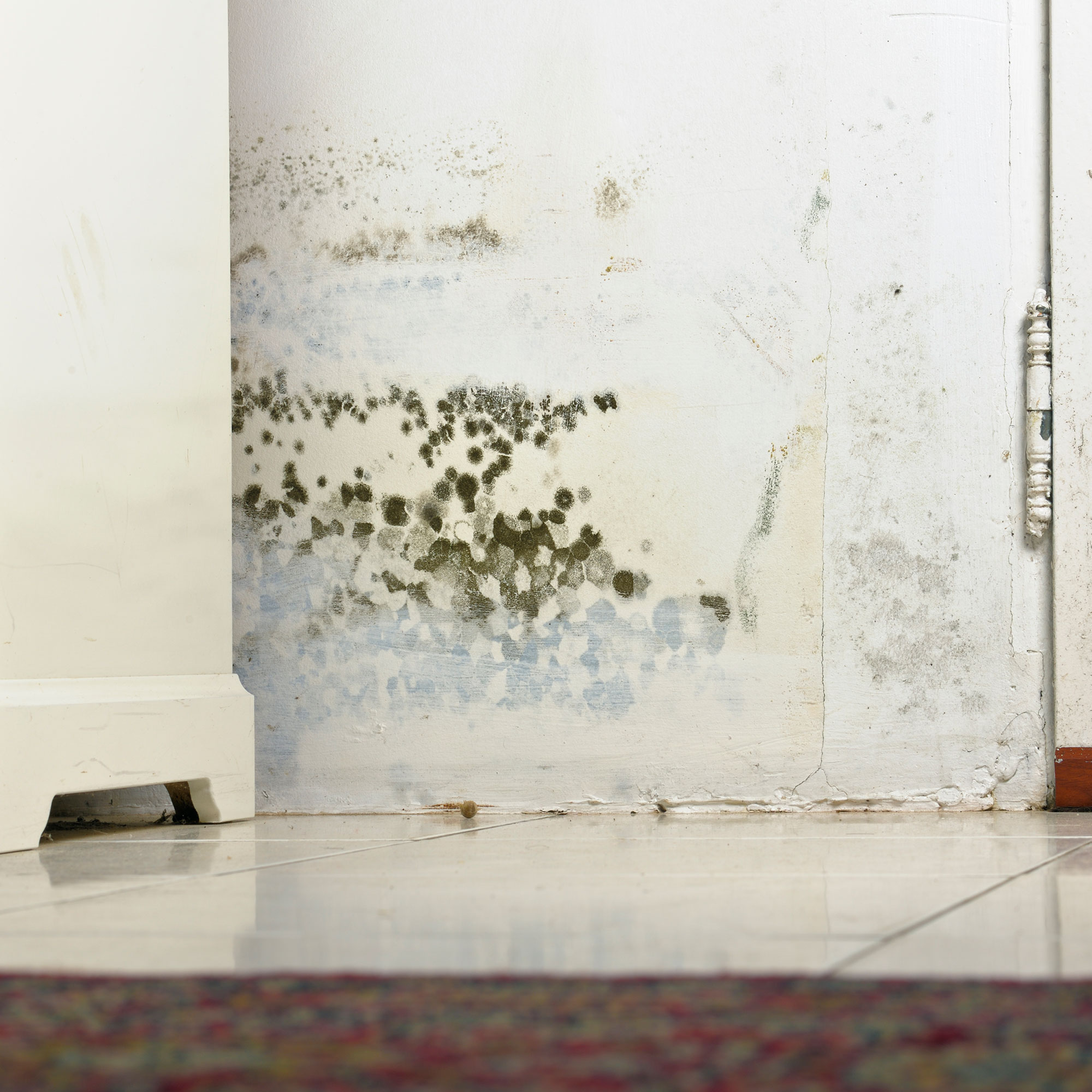
Rising damp is more serious than damp caused by condensation and is caused by water entering your home from the ground up. The moisture travels up your walls through capillary action, and it will always affect the lower levels of your home before potentially rising to the top level.
'Rising damp typically occurs due to a defective (or non-existent) damp proof course. In these cases, water held in the ground can be drawn up the masonry via capillary action, commonly leaving a ‘tide mark’ up to a metre above the floor, salty stains and peeling or cracking paint,' explains Nicholas Donnithorne, UK Technical Manager at Peter Cox.
'However, it is also quite possible to bridge a perfectly good damp course by raising ground levels or borders around a property and this will produce almost identical damage. Fixing rising damp is a job for a professional, and may require a remedial damp proof course to be installed.'
If left untreated, this rising damage can lead to extreme structural damage and may cost you thousands of pounds in maintenance costs. However, there are some key signs of rising damp to look out for, including rotting skirting boards and flaking paint or peeling wallpaper. So, you should be able to act quickly.
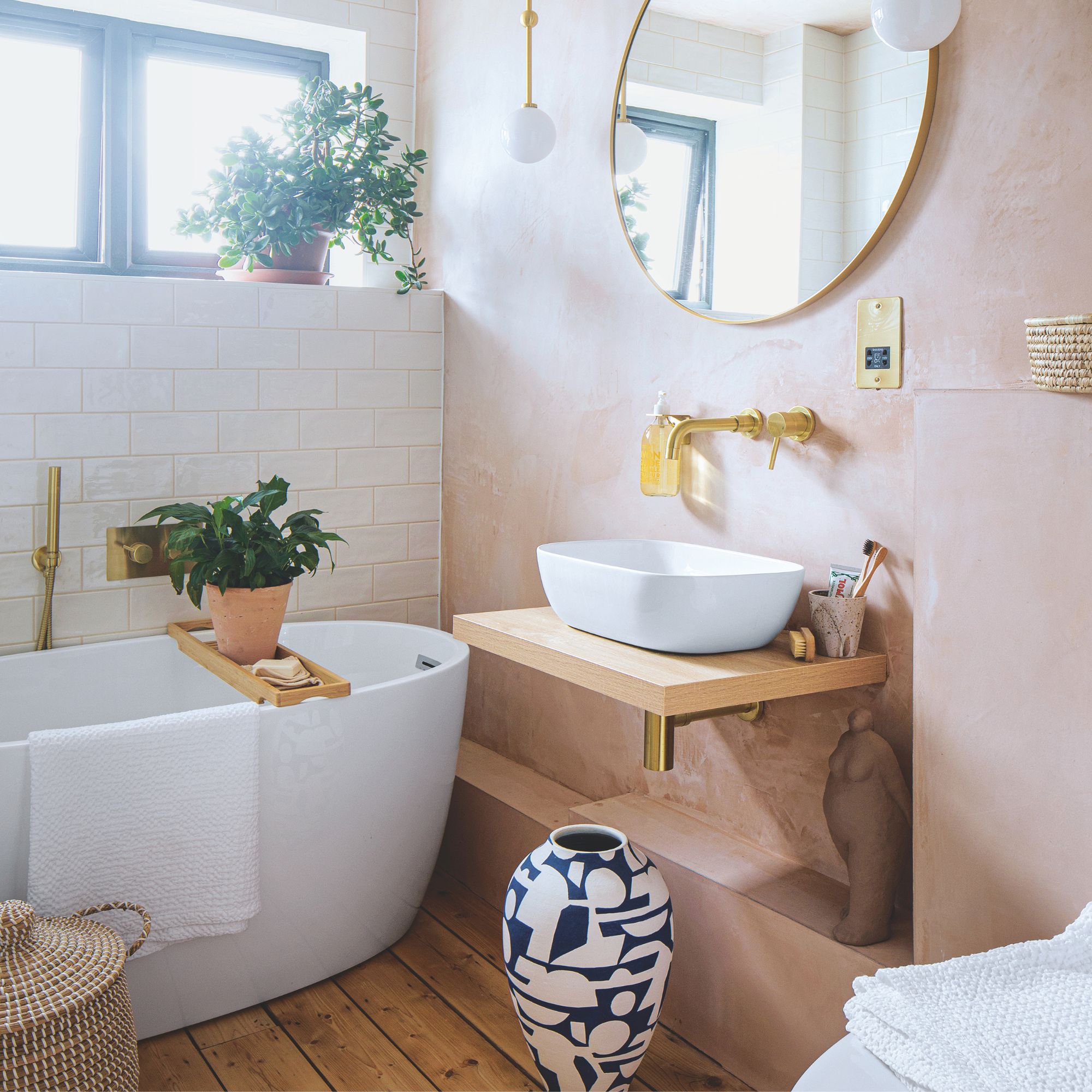
How to get rid of damp
Fixing condensation
To tackle condensation in your home, it’s all about boosting ventilation and keeping moisture levels in check.
To stop condensation on walls, and windows in your home, it’s all about boosting ventilation and keeping moisture levels in check.
'To address condensation, you need to try to improve ventilation and extraction to avoid the accumulation of moisture in the air or reduce the amount of steam you are producing,' explains Jess Thomas, managing director of Drainage Central.
Start by cracking open windows, especially in steamy spots like the kitchen and bathroom, and make extractor fans your best friend.
Keep furniture a little away from walls to let air circulate, and if you’re still battling damp windows, look at using a dehumidifier, especially in winter.
Fixing penetrating damp
Penetrating damp is a common issue in older homes, but thankfully, it’s fixable with the right approach.
'To treat penetrating damp, you should try to identify where the moisture is actually coming from. Most often, water will be entering your home from common ingress points such as pointing, brickwork, render or rainwater disposal systems if they are damaged or defective,' explains Jess Thomas, managing director of Drainage Central.
'Fixing these issues may solve the problem, so check that your guttering is not blocked, roof tiles are repaired or replaced, cracks in render are resolved and any damaged plumbing that is leaking is under control.'
'After you have found the cause of the water ingress and it has been repaired, you can begin to dry out the affected areas so that they can be replastered and rotten timber can be replaced. Treating exterior brickwork with masonry protection cream (like StormDry Masonry waterproofing cream from Amazon) can help it to repel rain to prevent water entering, but this will not work unless other structural defects involving the bricks are dealt with.'
Fixing rising damp
Rising damp is one of those sneaky, insidious problems that can wreak havoc on your home if left unchecked. You’ll notice telltale signs like tide marks, peeling wallpaper, or that musty, damp smell lingering in the air. The key to treating rising damp? Jess Thomas from Drain Central has the answer.
'If you think that you have a problem with rising damp, you should firstly check if your property has a damp proof course. If not, you will need to install a remedial damp proof course,' explains Jess.
'Most modern homes are built with these, but they may not be included with older homes. Alternatively, if your property does have a damp proof course, check that this is not damaged and is installed correctly.'
'Building work can affect damp proof courses, or there may have been a change in the ground level of your home which means that the course is no longer high enough. Installing or repairing the damp proof course should begin to allow the walls of the property to dry out, but the damp may have caused salts to form on the plaster and damage it.'
'Part of fixing rising damp should be replastering walls, but check the kind of plaster that you are using as some are not compatible with salt-contaminated walls. This is because traces of salt can migrate to the new coat of plaster and the dampness may continue.'
Like all damp problems, improving ventilation and keeping external ground levels below your internal floors can also help.
How to prevent damp
Prevention is always better than cure, so keeping up with regular maintenance is your best defence against this particularly tricky household woe. We run through what you can do to keep damp at bay.
1. Wipe down windows and sills every morning
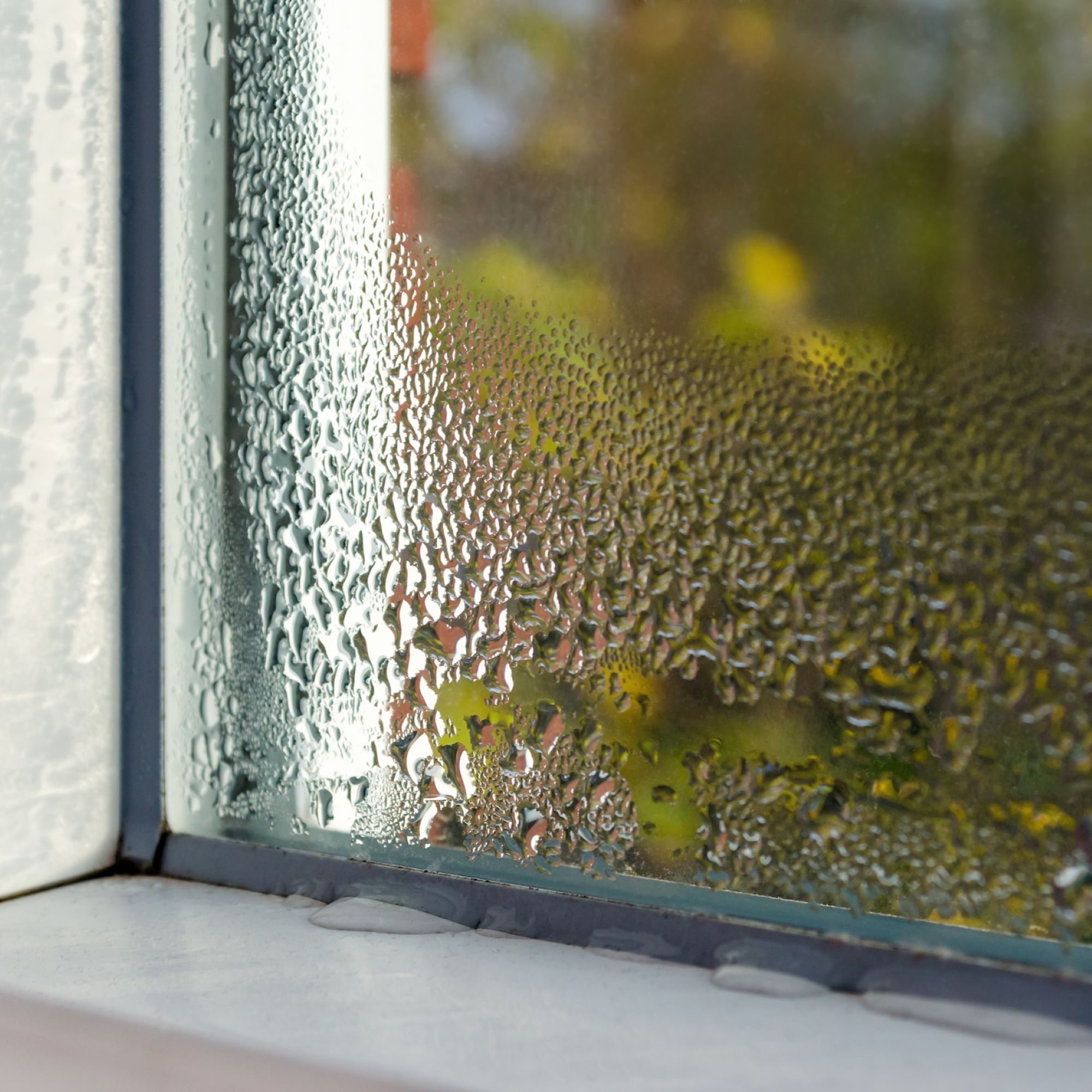
As with everything, prevention is easier than working out how to get rid of damp. 'Once damp starts, it can sometimes be difficult to remedy the issues it causes, such as mould growth and structural damage', says Ian Henderson, Managing Director, Boiler Plan.
So, if you want to stop condensation on walls, ceilings and windows, it’s well worth wiping down windows and sills every morning to remove this condensation and stop mould from forming.
You can use kitchen towel, a squeegee or a window vac for this job, but Molly Cleary, Ideal Home’s Kitchen Appliance Editor, swears by the Vileda Windowmatic for window condensation. It might help to occasionally wipe down walls and window frames with a fungicidal wash, too.
If you're removing mould caused by condensation, the NHS recommends that you wipe it away with a cloth dipped in soapy water. When you're done, use a dry cloth to remove any moisture, and throw both cloths away. Be careful not to brush the mould, as this can release mould spores.
This window vac is an Ideal Home favourite, and can clean up to 120 windows on one charge - so you shouldn't have to keep charging it up.
If you want a cheaper way to get condensation off your windows, a squeegee can still do the trick. A bonus is that you can use this on a shower screen, too.
This Karcher window vac comes with exchangeable suction heads to ensure you have the correct size for each cleaning task. Plus, it has a 35-minute run time.
2. Ensure proper ventilation

If you didn’t already know, experts have urged homeowners for years to open their windows for at least 15 minutes a day - even in the dead of winter. This allows for fresh air to flow through the house, and this ventilation can be integral in removing dampness and stopping condensation.
This is especially true if you regularly cook steaming saucepans of soup on the hob or every member of your family takes a steaming hot shower each morning, as this steam build-up can cause damp in no time.
'Try to regularly open windows to allow air to move freely and let moist air escape from the property', says Adam Pawson, Marketing Director, Safestyle UK. 'Ventilation systems such as extractor fans can also massively help to reduce the condensation in your homes.'
If you're looking to stop condensation on walls and ceilings in a particular room, you could also consider fitting air bricks. These are bricks with lots of tiny holes in them and can be added to exterior walls, allowing air to pass under a suspended timber floor.
Traditionally made from clay, they are now more commonly made of plastic. Plastic bricks allow for better airflow and are less easily broken. Long term, they will prevent damp and condensation from damaging the floorboards.
3. Buy a dehumidifier
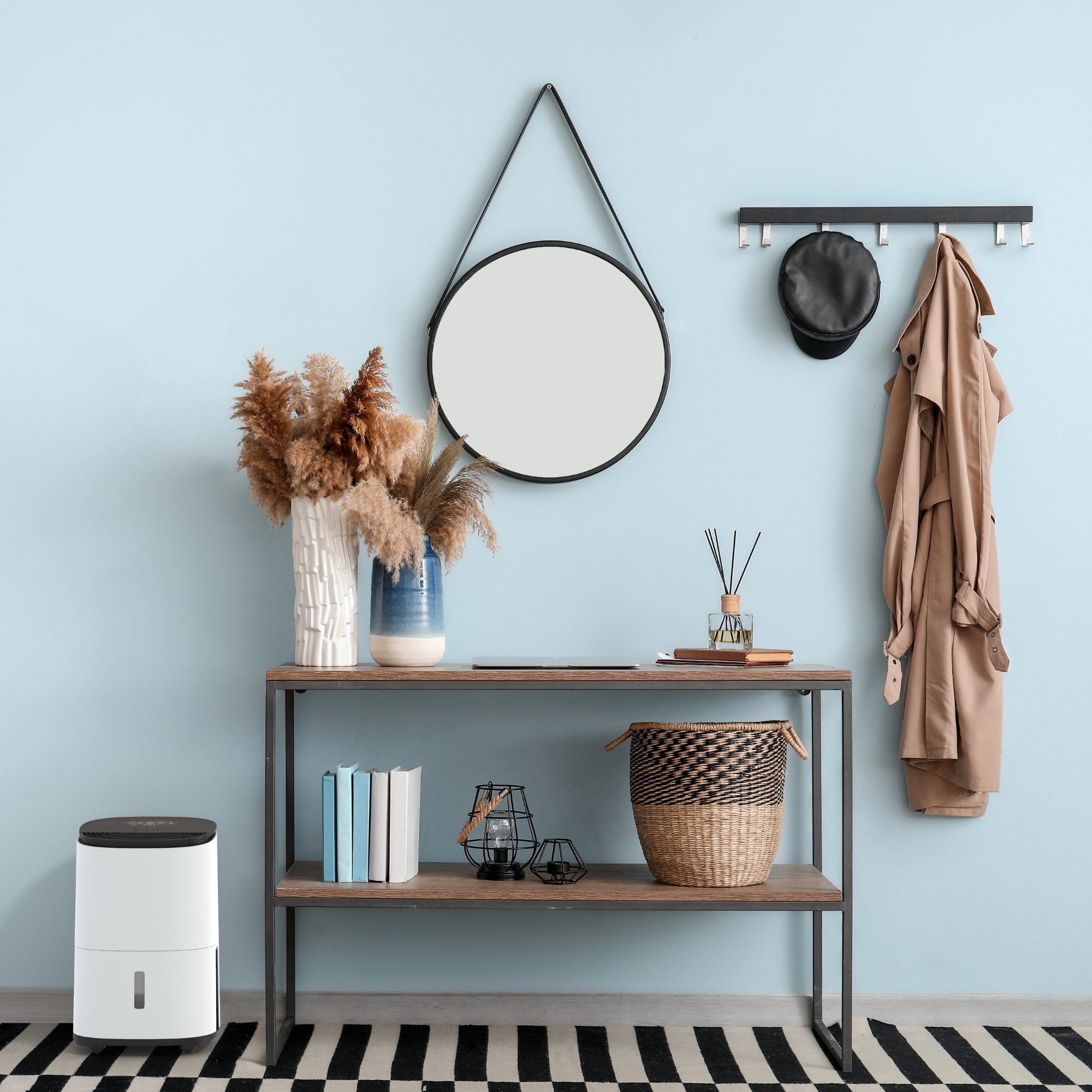
The best dehumidifiers are an essential appliance for any household - especially those struggling with dampness on walls, windows, or ceilings.
After all, dehumidifiers will reduce the level of humidity in the air by sucking in air from the room at one end, removing the moisture, and then blowing it back out into the room again, adding warmth in the process.
It’s important to understand the distinction between getting rid of damp and preventing mould, though. If you already have mould in your home, a dehumidifier will not get rid of it - and you’ll have to take alternative steps to do this. But when you’ve successfully removed it, a dehumidifier can definitely stop it coming back.
Nicholas Auckland, heating expert at Trade Radiators, explains, ‘These machines manually take moisture from the air, preventing condensation from forming. This is incredibly beneficial and will almost completely prevent extreme condensation and therefore mould.’
And you don't have to splash too much cash, either. Although more powerful dehumidifiers tend to be expensive, the best dehumidifiers under £100 can still help to reduce condensation. Of course, you still need to consider the cost to run a dehumidifier - but in some cases, this can be as little as 4p an hour.
Just make sure you’re not making any dehumidifier mistakes when you use it.
Crowned the 'best dehumidifier overall' in our guide, the MeacoDry is both a dehumidifier and an air purifier in one. It also has a laundry mode to help dry your clothes indoors while getting rid of damp.
If you're looking for a cheaper dehumidifier, this one should suit your budget better. It also has a built-in carbon filter to remove odours as well as moisture when getting rid of damp.
If you want to directly tackle condensation in smaller rooms of your house, you could also buy a small dehumidifier. Its compact build means it can be tucked away on a shelf, bedside table, or window sill to help get rid of damp.
4. Improve your insulation

Getting rid of damp and preventing the build-up of condensation on walls and ceilings in the future requires various stages - and improving your insulation (or at least inspecting it) is another one of them.
Good insulation is incredibly important, especially if you have cold spots on walls where condensation builds up. Cavity wall, loft insulation and other specialist options can combat damp – though in rare cases, it can also cause it, so always consult with an expert before you start your project.
Dean Taylor, Founder and CEO of The Loft Boys also adds that your loft can have a huge impact on the rest of your house. ‘Having adequate loft ventilation is one of the best ways to tackle loft condensation - this will help to remove warm vapour from the loft prior to it making contact with a cold surface in the loft and forming condensation. You can also find loft insulation which includes a vapour barrier, which can stop any moisture from entering the loft and getting to colder surfaces,’ he says.
You should also consider replacing draughty old doors and windows with double or triple glazing for how to stop condensation on walls and ceilings.
5. Don’t hang your clothes inside to dry
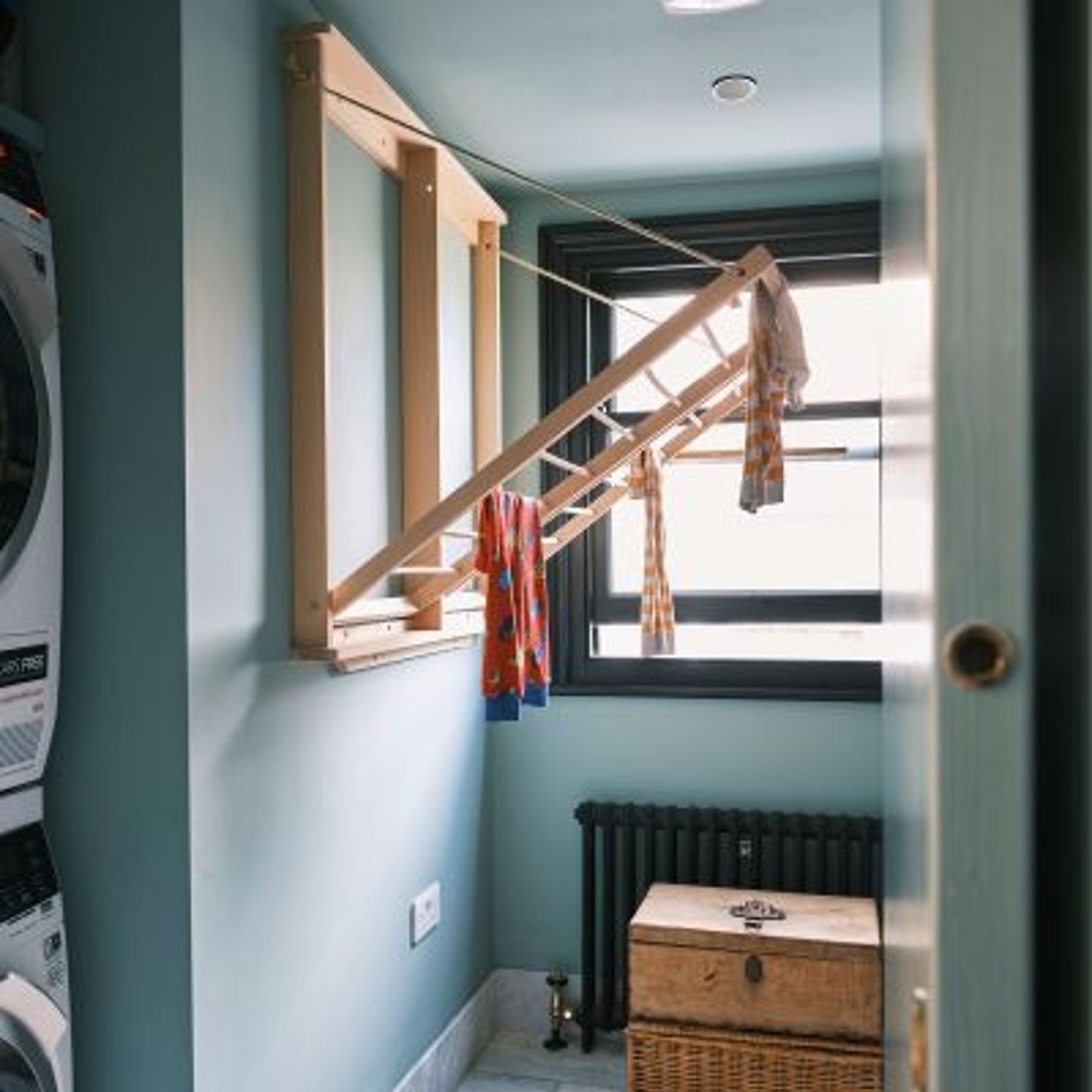
It can be hard to dry your clothes quickly without a tumble dryer, but if you want to get rid of damp you should avoid drying them inside at all costs.
'Drying clothes within the home can contribute to increased humidity and moisture in the air, which in turn can lead to problems with mould and damp,' explains Tom Edmunds, General Manager of British heating brand, Wunda Group.
Plus, 'with winter in full swing, we can no longer rely on hanging our clothes outside to dry, but air-drying our clothes indoors can leave them smelly if they’re not dried fully,' adds Vlatka Lake, storage expert at Space Station.
If possible, try hanging clothes outside to dry - even in winter. This will help stop condensation on walls and ceilings in the house. But we also know that this isn’t an option when the heavens open and the temperatures drop. So, consider one of the best heated clothes airers instead.
Just be warned that making heated airer mistakes can hinder your task to get rid of damp, so you need to understand how to use a heated airer effectively to avoid any surprises.
If you do have to leave clothes to dry inside, stick to airy, well-ventilated spaces and position a dehumidifier nearby to suck up the excess moisture.
In fact, in the heated airer vs dehumidifier debate, we found that using both simultaneously prevents moisture while drying clothes incredibly quickly.
'Alongside careful ventilation and monitoring humidity levels, considering installing underfloor heating in a utility room can also support with the efficiency of drying clothes and also help to prevent damp problems in the long term,' suggests Tom.
Dubbed the 'best overall' heated airer in our guide, the JML DriBUDDI can dry your clothes in just 2-3 hours - meaning you don't have to leave them out to make your home extra damp.
Have a large family? This heated airer has the largest capacity of all the airers we've tested, holding 20kg of washing for bigger loads of washing and allowing you to dry clothes quickly inside.
If you have a smaller home and want to get rid of damp but also dry your clothes inside, the Dry:Soon Mini 3-Tier Heated Airer is a smaller alternative. All in all, it holds up to 15kg of washing.
6. Keep your house warm

We know it can be hard to get rid of damp and stop condensation on walls and ceilings during the winter months, but one thing you can do is keep your home at a steady, warm temperature.
After all, damp occurs when warm air hits cold walls, so by keeping your house warm, the surfaces don't get cold enough to create condensation. But we also understand that in a world of rising energy prices, saving energy at home is something that you also need to consider.
So, you don’t necessarily have to turn on your whole central heating system to keep your house warm. You could make the most of smart heating systems that will learn more and more about your routine and even the draughts in your home to heat your house effectively, or you could invest in one of the best electric heaters or one of the best oil-filled radiators.
What causes damp?
In its simplest form, damp is caused by condensation. As the temperature falls, condensation rises, creating moisture on windows each morning which will eventually cause mould and damp.
'You will first start noticing droplets creating around the edges of your windows and then small black dots could start appearing around the window and spread towards the ceiling', says Chris Michael, Meaco's Managing Director. 'Those are the first signs of mould and you should act immediately.'
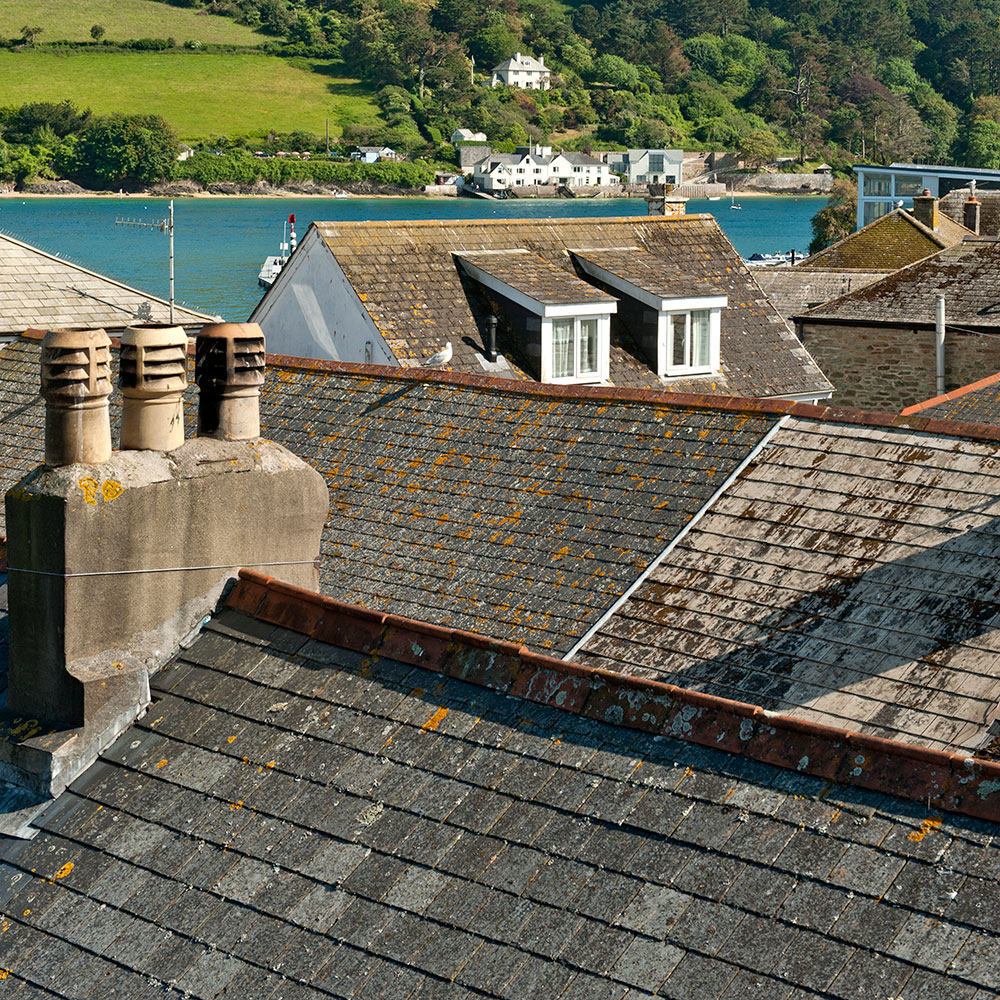
But that's not the only cause of damp. Leaking pipes, wastes or overflows might be the culprits, often intensified by a lack of cavity wall insulation. Rising damp that comes up from the ground is commonly caused by having a damaged damp-proof course, or no damp-proof course at all. Or there could be water penetrating from outside because of a missing roof tile, leaking window frame or blocked gutter.
'Anything involving heat will help kill off any bacteria,' advises cleaning expert, Matthew Harrison from Price Your Job. 'Therefore using a steam cleaner is an effective way to kill mould that is present, as it will penetrate the surface and kill 99.9 per cent of bacteria and germs.'
'However, using steam on mould will not kill an ongoing mould issue, as it does not get to the root of the issue. To prevent future mould problems, you should consider draught proofing and other jobs which will prevent moisture from entering your home.'
FAQs
Does home insurance cover damp?
We asked David Joyson, Chief Customer Officer at Homeprotect.
'Insurance cover for damp will depend on your provider and policy. If it’s caused by an insurable problem like water ingress due to storm damage or escape of water due to a burst pipe, your home may be covered by buildings insurance,' explains David.
'If damp problems occur due to subsidence, which can affect the property’s structure, your insurer may cover repairs if your policy covers this and the provider is aware of existing subsidence challenges. Some insurers, like Homeprotect, provide specialist subsidence insurance cover.'
'However, home insurers are less likely to cover damp-inflicted damage if there’s evidence the property has been poorly ventilated, gutters have had an unreported and unaddressed leaking issue or signs of damp haven’t been resolved or reported previously.'
'If an insurer believes you have failed to maintain your home, they may reject your claim. Damp that was present before the policy came into effect also won’t be covered.'
We asked Jess Thomas, managing director of Drainage Central what you should do if damp shows up on a house survey.
'Any reports of damp on a survey should be assessed carefully before you continue with a property purchase. The survey should give you a clear idea of the extent of the issue and how easy or not it will be to fix.'
'You can opt to have a separate damp survey carried out to provide a more accurate picture of the level of damage and an estimate for repair costs. Damp issues could affect structural integrity long-term, so check how this might affect a mortgage application too.'
'Homebuyers then need to decide whether or not to continue with the sale. If you choose to continue, you can potentially renegotiate the price to factor in the cost of repairs or request the seller fix the damp before completion.'
'Regardless, any issues should be reported to your home insurer prior to the policy starting, to avoid invalidating your policy.'
What should I do if damp shows up on a house survey?
We asked Jess Thomas, managing director of Drainage Central what you should do if damp shows up on a house survey.
'Any reports of damp on a survey should be assessed carefully before you continue with a property purchase. The survey should give you a clear idea of the extent of the issue and how easy or not it will be to fix.'
'You can opt to have a separate damp survey carried out to provide a more accurate picture of the level of damage and an estimate for repair costs. Damp issues could affect structural integrity long-term, so check how this might affect a mortgage application too.'
'Homebuyers then need to decide whether or not to continue with the sale. If you choose to continue, you can potentially renegotiate the price to factor in the cost of repairs or request the seller fix the damp before completion.'
'Regardless, any issues should be reported to your home insurer prior to the policy starting, to avoid invalidating your policy.'
Does having heating on stop damp?
We asked Mike Storey, insulation and property expert from UKFR Roofing & Insulation about whether heating can reduce humidity and condensation.
'A cold home tends to make damp issues worse. Keeping a property warm is important, as it can slow the spread of damp and reduce condensation, which occurs when moisture in the air settles on cold surfaces.'
'By maintaining a consistent temperature, you can minimise the amount of condensation forming on walls. Heating can also help dry out damp areas once the source of moisture has been eliminated, but it’s not a complete fix unless the underlying issue is resolved. To prevent damp in the long run, you need to address its root cause.'
How to dry damp walls quickly?
The most effective way to dry damp quickly is to remove the excess moisture from the air and improve airflow. So, open up your windows and doors to circulate the air and allow fresh air in (you can also use a fan to do this), and then use a dehumidifier to remove the moisture.
However, it’s important to understand why you have damp walls, as drying out the damp walls quickly might not solve the issue if you have a structural issue or damage that is causing the damp. So, always inspect your home further when you spot the first signs of damp.
How to find where damp is coming from?
If you’ve spotted signs of damp, look around that same general area - both inside and out - for any leaks or damage. In some cases, it may be as simple as a broken window seal, but in more severe cases, it may be the result of penetrating damp or exterior damage.
Damp can make its way into your house in many ways, so inspect the area for cracks, holes, leaking pipes, or anything else that could result in excess moisture build-up in your home. If you can’t spot anything and the damp continues, it’s best to consult an expert.
Well, there you have it. That’s how you get rid of damp and condensation. If you have found that you have correctly identified the problem, you should be able to tackle it yourself. However, always consult a professional if you think the issue is more serious.
'Check that your home's damp-proof course isn't buried under soil or pathways, repair any cracked render, replace damaged roof tiles, and treat porous bricks with silicone water-repellent paint,' suggests Mike Storey, insulation and property expert from UKFR Roofing & Insulation.
'Blocked or leaking gutters and drainpipes should also be cleared to prevent water from seeping into the walls. If you're uncertain about how to combat the damp, it’s best to consult a trusted professional.'
If you think you are up to the job, you could try your hand at cleaning gutters yourself.







